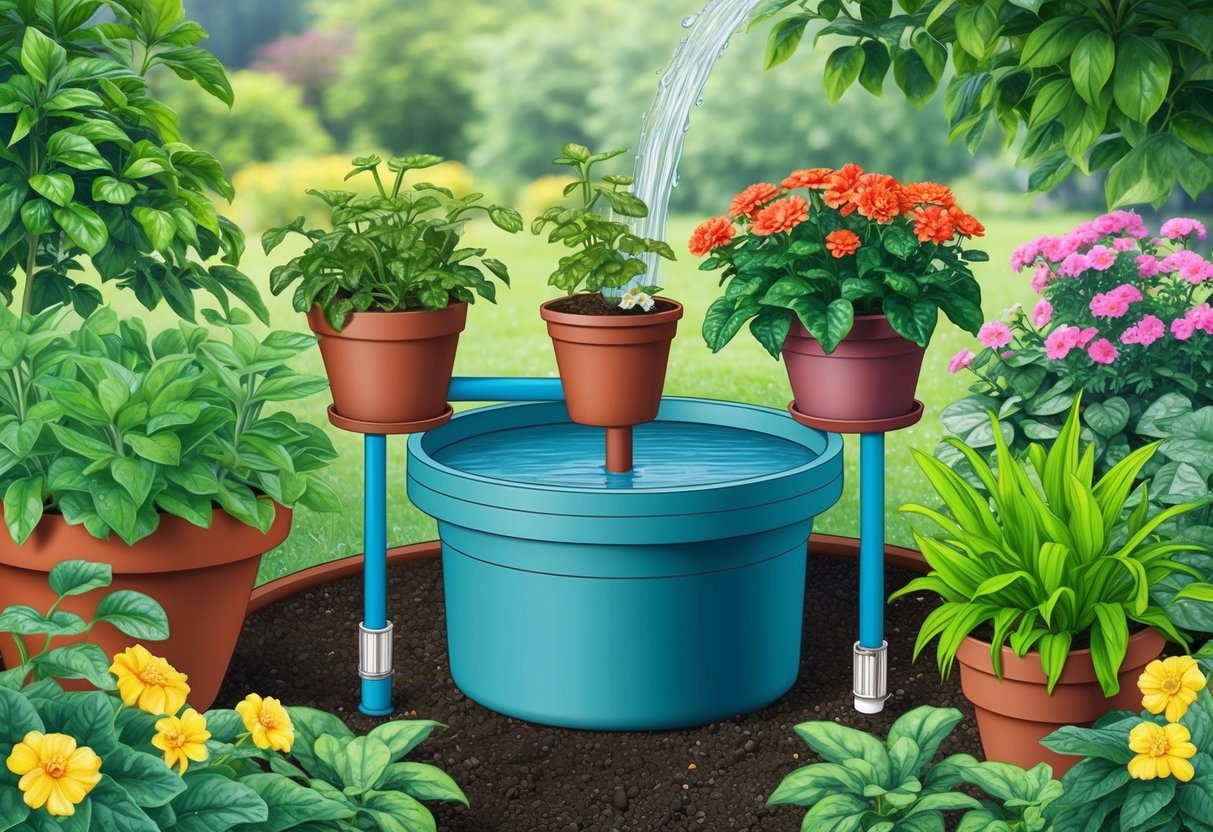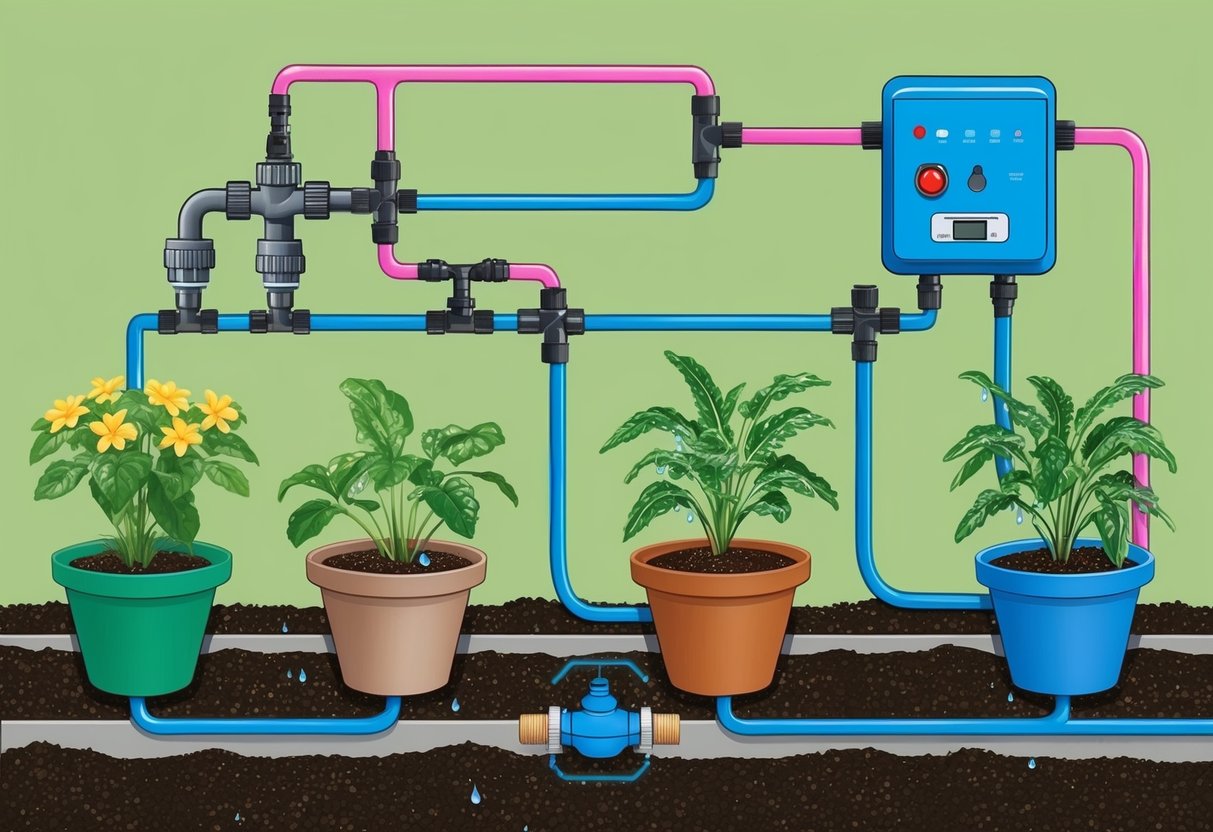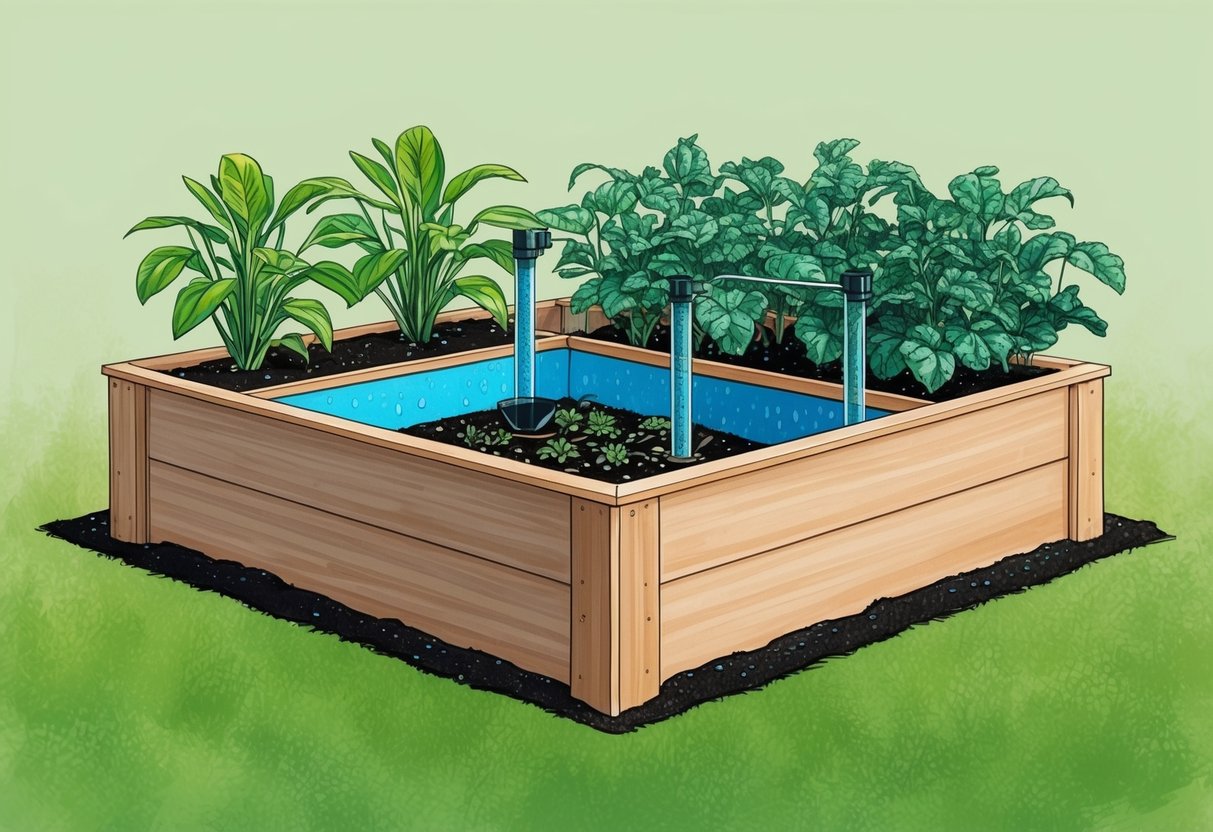
Automating Your Watering System

Setting up a reliable self-watering garden system depends on choosing the right timer controls and stable power supplies. Proper integration of these technologies minimizes daily manual intervention and reduces the risks of under- or over-watering.
Using USB and Smart Timers
Timely irrigation keeps plants healthy and prevents water waste. A USB-powered timer is a convenient choice; it can be plugged into a basic USB power adapter, computer port, or power bank.
These timers offer programmable watering schedules, allowing users to adjust frequency and duration with precision. Smart timers can be controlled via smartphone apps or voice assistants.
This adds flexibility for remote management and easy adjustments. When installed with drip irrigation lines, a USB timer or a WiFi-controlled smart timer streamlines plant care.
For example, combining a smart timer with a moisture sensor means the system only waters when the soil is dry, further reducing water use. Popular options include compact DIY smart watering systems that connect through standard USB cable connections.
This ensures both ease of installation and compatibility with common power setups already in most homes.
Power Sources and Connections
Reliable power is essential for any automated watering solution. Most small home systems use either USB adapters, battery packs, or direct AC power.
USB power sources are popular for their portability and the ability to use common cables. This means users can position their irrigation controller closer to plants without needing heavy wiring.
A straightforward approach is to use a USB power bank, which provides backup power during outages or while away. Solar USB chargers are another eco-friendly solution, keeping the system running off-grid.
Connections should be secure, avoiding loose USB cables or exposed wiring, to prevent interruptions or water damage. For large systems, direct plug-in to a reliable wall outlet with surge protection is best.
Using the right power source ensures timers, pumps, and moisture sensors run smoothly all season. Using weather-resistant USB extension cables also makes outdoor placement more practical, protecting circuits from rain and moisture.
Best Practices for Nutrient Management

Maintaining optimal nutrient levels is essential for plant growth in self-watering garden systems. Proper fertilization and attentive management of mineral deposits help provide plants with consistent nourishment and prevent common issues related to automated watering.
Fertilizing with Self-Watering Systems
In self-watering setups, nutrients are often delivered through the water reservoir, ensuring steady availability to plant roots. This method requires selecting water-soluble fertilizers.
These dissolve easily and prevent clogging of the system. Gardeners should follow a consistent fertilization schedule based on plant needs, with many choosing to dilute liquid fertilizers to half-strength to avoid nutrient burn.
It’s important to monitor signs of nutrient deficiency, such as yellowing leaves or stunted growth.
Choosing the right fertilizer:
- Use balanced, water-soluble fertilizers (e.g., 10-10-10 or 20-20-20 NPK blends).
- Organic options like fish emulsion and liquid seaweed can be safer for sensitive plants.
Tips:
- Replace or flush the reservoir every few weeks to maintain the right nutrient balance.
- Test the water’s pH to ensure nutrients are available to the plant and absorbed efficiently.
Avoiding Mineral Buildup
Mineral buildup is a common issue in self-watering planters, especially when using hard water or frequent fertilizer applications. Residues can block wicking systems and harm root health.
Signs of buildup:
- White crusty deposits on soil or container edges
- Slowed water uptake
To prevent this, regularly flush the system by filling the reservoir with clean, fresh water and allowing it to drain through the soil. Changing out reservoir water helps minimize salt accumulation and ensures an even supply of nutrients.
Use distilled or rainwater when possible, as these contain fewer dissolved minerals than tap water. Periodic inspection and gentle cleaning of reservoirs and wick materials further reduce the risk of buildup and keep the self-watering system functioning efficiently.
For an in-depth guide on system care, visit this self-watering planters guide.
Care and Maintenance Tips

Maintaining a self-watering garden system involves routine cleaning and quick attention to problems. Staying on top of these tasks ensures reliable performance, maximum efficiency, and healthy plant growth.
Cleaning Tubes and Reservoirs
Regular cleaning of the water reservoir and irrigation tubes is essential to prevent build-up and ensure steady water delivery. Debris, algae, and mineral deposits can clog tubes, impeding water flow and reducing efficiency.
It’s recommended to clean the reservoir every few weeks using a mild solution of water and vinegar or a gentle scrub with a bottle brush. Tubes should be flushed out with clean water to remove any obstructions.
If mineral deposits are visible, soaking them in a vinegar solution can dissolve most blockages. For self-watering garden systems with manual refill mechanisms, always check the fill tube for any trapped dirt, as small particles can accumulate and restrict flow.
A maintenance checklist can help:
- Remove and rinse the reservoir thoroughly.
- Inspect each tube for cracks or clogs.
- Disinfect all manual components periodically.
Keeping these parts clean extends system life and improves moisture consistency for plants. For more details about the importance of reservoirs in these systems, visit this guide to self-watering planters.
Troubleshooting Common Issues
Self-watering garden systems sometimes experience problems such as uneven water distribution, leaks, or drying out of soil. If plants are not staying hydrated, first check for blockages in the irrigation tubes or any dry soil near the wicking material.
Leaks can occur around the reservoir or where tubes connect. Tighten connections and replace worn components as needed.
In some cases, the water level indicator may malfunction, requiring manual inspection of the reservoir. If mildew or algae appears, expose the system to sunlight periodically and avoid overfilling.
Should root rot develop, reduce reservoir filling frequency to keep the root zone from staying too wet. Additional troubleshooting steps may be found in this ultimate guide to self watering systems.